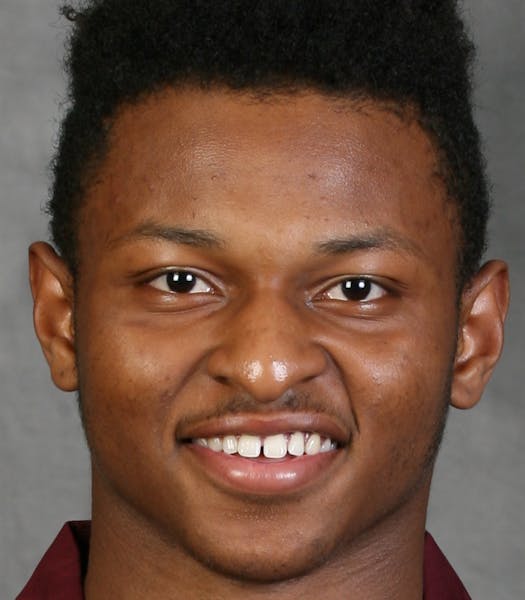Gophers freshman Jaylen Waters walked off Penn State's field to a chorus of boos last week, ejected for unsportsmanlike conduct after a late hit against the Nittany Lions' kicker.
Four weeks earlier, officials ejected three Gophers for targeting against Oregon State. Throw in Jalen Myrick's unsportsmanlike conduct penalty against Colorado State, and eight false start penalties from the offensive line, and the first third of Minnesota's season has been permeated by yellow flags.
The Gophers are averaging 75.8 penalty yards per game, most in the Big Ten. It's an uncharacteristic spike for a team that averaged 45.5 last season, fourth fewest in the conference, and 46.5 the year before that.
Coach Tracy Claeys has made it clear he wants to avoid several categories of penalties — namely the unsportsmanlike, targeting and pre-snap variety. But the sheer penalty numbers don't bother Claeys.
"The procedure penalty — you've got to eliminate that," he said last week. "Holdings are going to get called every now and then. Jalen [Myrick] — you can't have things like that where you lose your emotion and get a penalty.
"But aggressive penalties — sometimes you have them. I think you can go back and look at some of the better teams each year. I don't know that penalties are a great indicator what type of year you're going to have."
The Gophers finished 6-7 last year, despite their relatively small number of penalties. This year, they average 8.8 penalties per game, tied for most in the Big Ten — with No. 2 Ohio State.
But the two teams that met in last year's Big Ten championship game — Michigan State and Iowa — were among the conference's five least-penalized teams.
The Gophers viewed the Oregon State game, with the three targeting penalties, as an anomaly. Targeting is a rule designed to limit hits to the head, and they'd been flagged for it only twice the previous four years, with both calls overturned.
But Minnesota's jumpy offensive line was an issue for three games. The line drew three false start penalties apiece in the first two games, and two more in Game 3.
"I think it's just a pre-snap focus," offensive coordinator Jay Johnson said.
After three home games, the Gophers made eliminating those penalties an even bigger priority for the Penn State game. The offensive line avoided that penalty, but Claeys also thought the Gophers weren't as quick to get off the ball.
Meanwhile, the defense jumped the gun twice, drawing offsides penalties that gave Penn State two free first downs when it was facing third-and-2.
"We're going to continue to work on it," Claeys said Sunday. "But I'm not convinced that's the reason we're losing."
The Gophers have drawn 16 defensive penalties, 12 offensive penalties and seven on special teams. That latter category was the head scratcher at Penn State.
Freshman Thomas Barber drew a 15-yard penalty on a punt for leaping over a blocker, giving the Nittany Lions a first down. Duke McGhee got flagged for kick-catch interference, gifting Penn State another first down.
Then Waters leveled Penn State kicker Joey Julius, who'd earned a reputation for some hard hitting himself. This kick went out of the end zone for a touchback, and Waters' hit came after the whistle.
Claeys blood seemed to boil afterward the more reporters asked about the play.
"Nobody has more pride and cares about the game of football more than me," he said. "… I care about protecting the game, and I don't believe in that. I'll take care of it. So anybody who thinks that we coach that does not know us."
On Tuesday, Claeys said he spoke to the Big Ten office about the penalty.
"It's been taken care of in my opinion," he said. "It was not targeting. It was late, but it wasn't like five seconds late. It was illegal because it was late, after the whistle. He's paid his penalty, and we're going to move on."

Scoggins: Third draft's the charm for Vikings' Adofo-Mensah
Vikings trade up twice in NFL draft. They take Michigan QB J.J. McCarthy, Alabama edge Dallas Turner
Zendaya, Josh O'Connor and Mike Faist on the steamy love triangle of 'Challengers'

